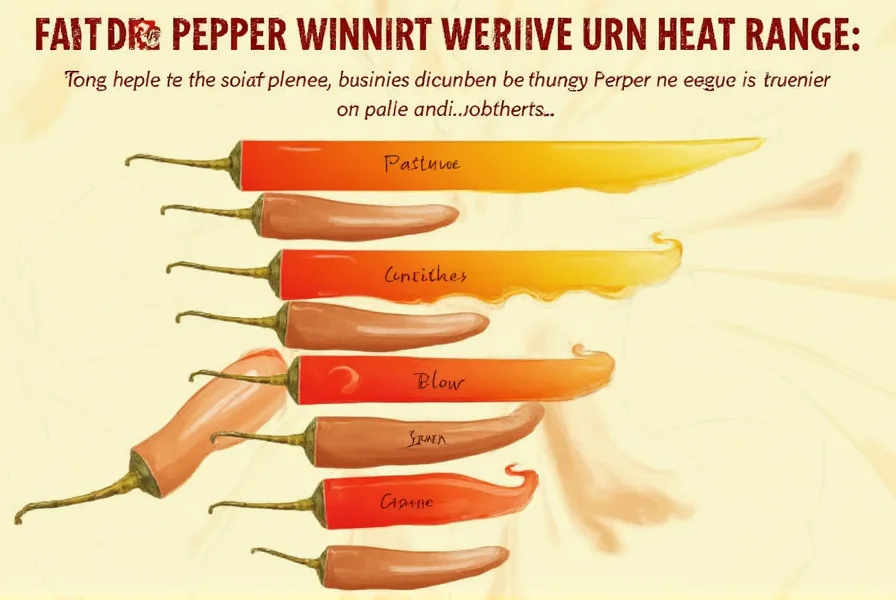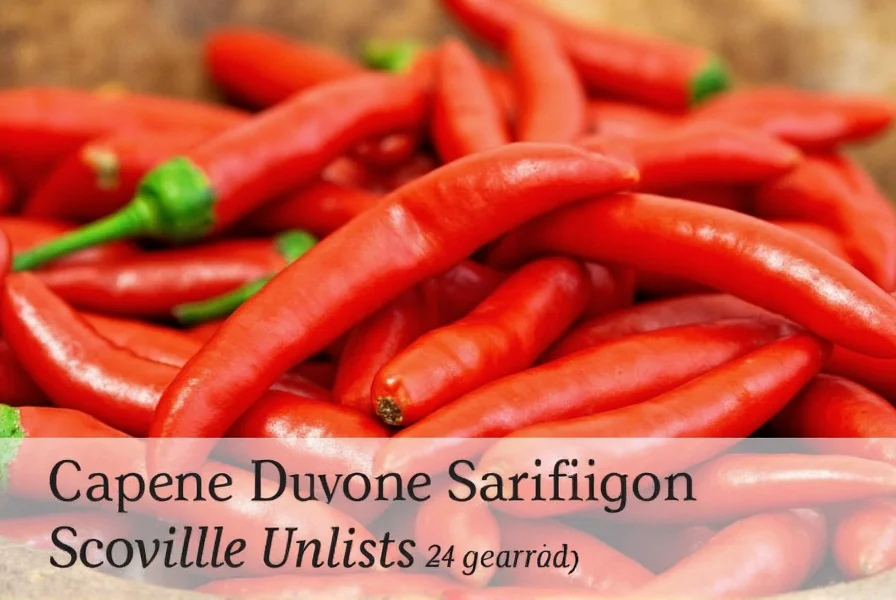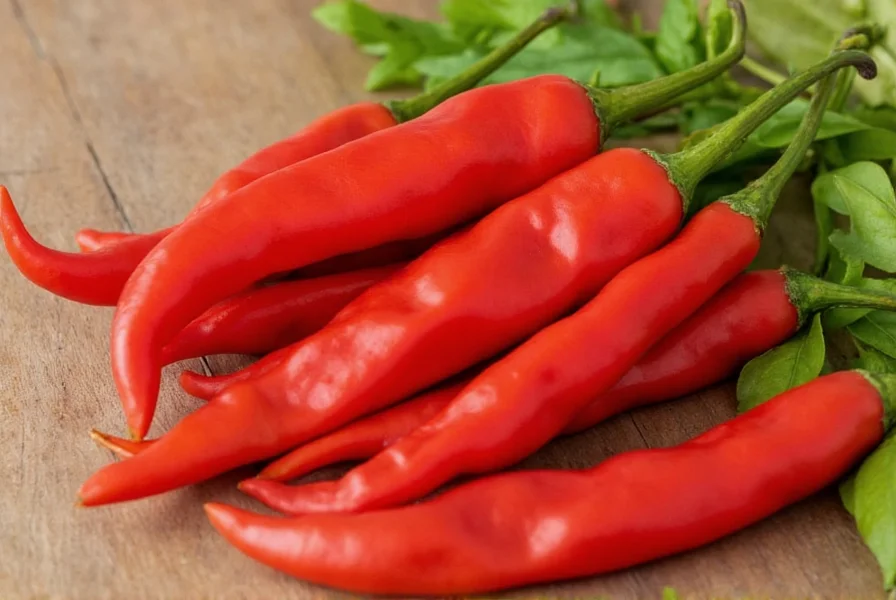Understanding cayenne pepper's position on the Scoville scale provides valuable context for culinary applications and personal consumption. Developed by pharmacist Wilbur Scoville in 1912, the Scoville scale measures capsaicin concentration—the compound responsible for a pepper's heat. While modern high-performance liquid chromatography (HPLC) now provides more precise measurements, the Scoville scale remains the standard reference for comparing pepper heat levels.
Cayenne's 30,000-50,000 SHU range makes it significantly hotter than many common peppers but milder than extreme varieties like ghost peppers or Carolina reapers. This heat level delivers noticeable spice without overwhelming most palates, explaining cayenne's widespread use in cuisines worldwide. The specific heat within this range varies based on growing conditions, pepper maturity, and specific cultivar.
Where Cayenne Pepper Falls on the Scoville Scale
Understanding cayenne's heat requires context. The following comparison shows how cayenne pepper's Scoville units compare to other popular peppers:
| Pepper Type | Scoville Heat Units (SHU) | Heat Level Description |
|---|---|---|
| Bell Pepper | 0 SHU | No heat |
| Jalapeño | 2,500-8,000 SHU | Mild to medium heat |
| Serrano | 10,000-23,000 SHU | Medium heat |
| Cayenne | 30,000-50,000 SHU | Medium-hot |
| Thai Bird's Eye | 50,000-100,000 SHU | Hot |
| Ghost Pepper | 855,000-1,041,427 SHU | Extremely hot |
Factors That Influence Cayenne Pepper's Heat Level
Several variables affect where within the 30,000-50,000 SHU range a particular cayenne pepper falls:
- Growing conditions: Soil composition, climate, and water availability significantly impact capsaicin production. Stressors like drought often increase heat levels.
- Maturity: Fully ripe red cayenne peppers typically register higher on the Scoville scale than younger green varieties.
- Plant genetics: Different cayenne cultivars have been bred for varying heat levels, with some specialty varieties exceeding standard ranges.
- Part of the pepper: The placenta (white ribs) contains the highest concentration of capsaicin, while the flesh is comparatively milder.
Practical Implications of Cayenne's Heat Level
The 30,000-50,000 SHU measurement isn't just a number—it has real-world culinary significance. When working with cayenne pepper, consider these practical applications:
Cooking with cayenne requires careful measurement since its heat can quickly dominate a dish. A quarter teaspoon of cayenne powder often equals the heat of one fresh jalapeño. Unlike milder peppers, cayenne's heat persists through cooking rather than diminishing, making it ideal for dishes requiring lasting spice.
For those sensitive to spice, cayenne's medium-hot classification means it should be introduced gradually. The capsaicin triggers endorphin release, creating both the burning sensation and subsequent pleasure response. This physiological reaction explains why many develop a tolerance and even preference for spicy foods over time.

Safety Considerations When Handling Cayenne
Working with peppers measuring 30,000-50,000 Scoville units requires precautions. Capsaicin oils can cause skin irritation and severe discomfort if transferred to sensitive areas like eyes. Always:
- Wear gloves when handling fresh cayenne peppers
- Avoid touching your face during preparation
- Wash hands thoroughly with soap after handling
- Use caution when processing dried cayenne powder to avoid inhaling airborne particles
If you experience skin irritation, apply milk or yogurt to the affected area—capsaicin is fat-soluble, so dairy products help neutralize the burn more effectively than water.
Understanding Scoville Ratings in Context
While the Scoville scale provides a standardized measurement, individual perception of cayenne's heat varies significantly. Factors including:
- Genetic differences in taste receptors
- Previous exposure to spicy foods
- Food matrix (what the pepper is combined with)
- Temperature of the dish
all influence how heat is perceived. For example, cayenne in a fatty dish like cheese sauce will feel less intense than in a light broth due to capsaicin's solubility in fats.

Frequently Asked Questions
How does cayenne pepper compare to other common peppers on the Scoville scale?
Cayenne pepper (30,000-50,000 SHU) is significantly hotter than jalapeños (2,500-8,000 SHU) and serranos (10,000-23,000 SHU), but milder than Thai bird's eye chilies (50,000-100,000 SHU). It's approximately 6-20 times hotter than a typical jalapeño.
Why does the Scoville range for cayenne pepper vary so much?
The variation (30,000-50,000 SHU) results from growing conditions, specific cultivar, maturity level, and even which part of the pepper is measured. Environmental stressors like drought can increase capsaicin production, pushing some cayenne peppers toward the higher end of the range.
Is cayenne pepper powder as hot as fresh cayenne peppers?
Dried cayenne powder often measures slightly higher on the Scoville scale than fresh peppers because dehydration concentrates the capsaicin. However, the difference is minimal—both fall within the standard 30,000-50,000 SHU range for cayenne.
Can I reduce the heat of cayenne pepper in cooking?
Yes, you can moderate cayenne's heat by removing the seeds and white ribs (placenta), which contain the highest capsaicin concentration. Adding dairy products like yogurt or cheese also helps counteract the burning sensation, as capsaicin is fat-soluble.
What's the difference between cayenne pepper and red pepper flakes?
While both contain cayenne, red pepper flakes typically include other chili varieties and may have a different heat profile. Pure cayenne pepper powder measures consistently at 30,000-50,000 SHU, while red pepper flakes vary widely (500-25,000 SHU) depending on the blend.











 浙公网安备
33010002000092号
浙公网安备
33010002000092号 浙B2-20120091-4
浙B2-20120091-4